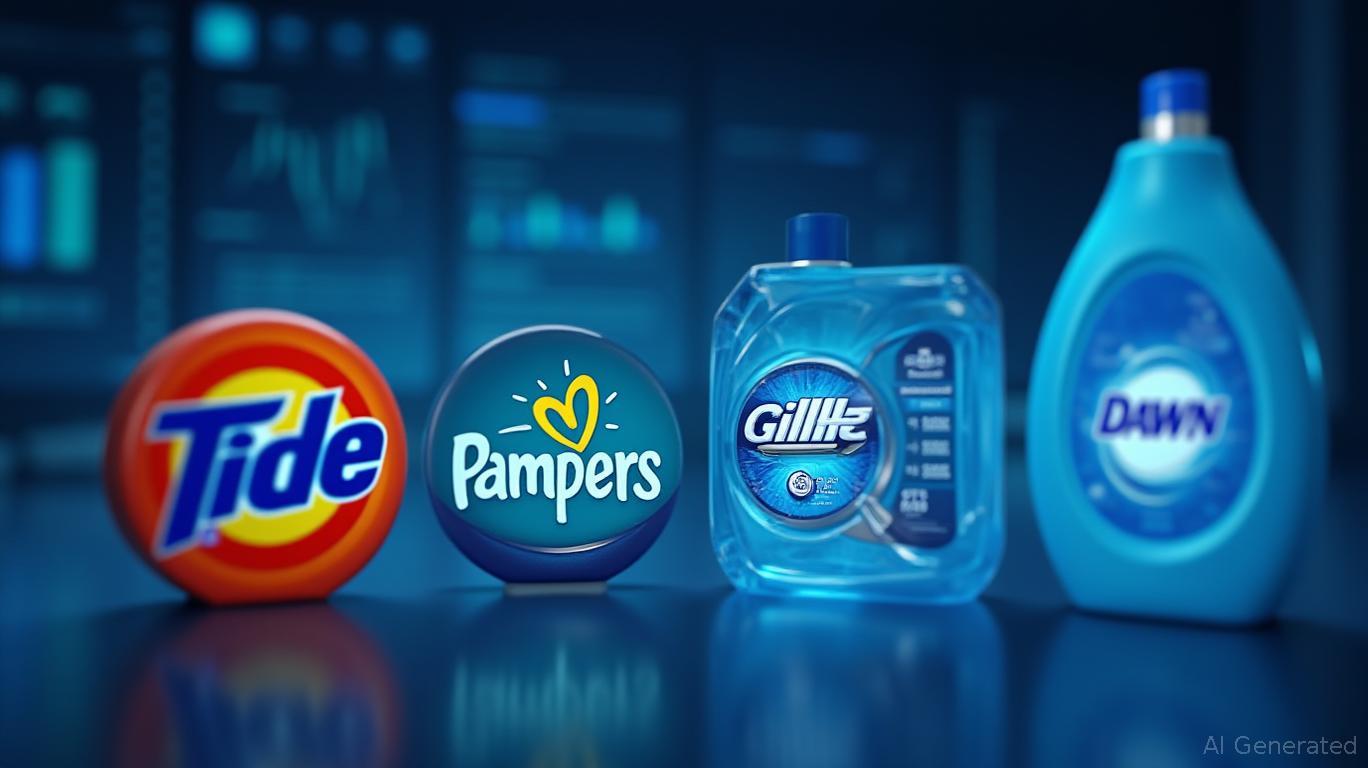Procter & Gamble's Restructuring: Strategic Shift or Symptom of Slowing Demand?
Procter & Gamble (PG) has announced sweeping job cuts—7,000 roles, or 6.5% of its global workforce—to address slowing growth, tariff-driven cost pressures, and economic uncertainty. The move underscores a critical question for investors: Is this a disciplined pivot toward operational efficiency, or a cover for deeper demand weakness in the consumer packaged goods (CPG) sector? To answer this, we must dissect PG's strategic calculus, valuation metrics, and the role of emerging technologies like AI in reshaping its trajectory.

The Cost-Cutting Imperative: Efficiency vs. Demand Deterioration
PG's restructuring is framed as a response to three overlapping challenges:
1. Slowing U.S. Demand: Organic sales grew just 1% in the fiscal third quarter, with categories like baby care (-2%) and skin care (flat) lagging. The broader U.S. consumer has “hit pause,” with sentiment near decade lows.
2. Tariff-Induced Cost Pressures: Trump-era tariffs have added a $600 million annual headwind by fiscal 2026, forcing
3. Global Market Fragmentation: Sales in “enterprise markets” (excluding core regions like the U.S. and China) grew only 1%, suggesting overextension in less profitable regions.
The job cuts target non-manufacturing roles, sparing its 52,000 factory workers—a nod to preserving core production capacity. PG aims to save $1.5 billion annually by 2026, offsetting near-term headwinds. However, the $1–1.6 billion restructuring costs highlight the upfront pain of this transition.
Valuation: Overpriced for a Mature Giant?
PG's valuation metrics are mixed:
- EV/EBITDA of 17.08 exceeds the CPG industry median of .13, signaling premium pricing. This reflects PG's scale, brand equity (e.g., Gillette, Tide), and dividend consistency ($1.0065/share).
- P/E of 26.40 is above its five-year average, yet forward earnings multiples (22.5x) suggest some discounting of near-term risks.
- Beta of 0.445 indicates low volatility, appealing to risk-averse investors.
Competitors like Colgate (CL, EV/EBITDA 10.3) and Unilever (UL, EV/EBITDA 14.8) trade at lower multiples, but PG's diversified portfolio and AI-driven innovation (more on this later) justify its premium. However, a 3.1% YTD stock decline post-announcement underscores investor skepticism about the restructuring's efficacy.
The AI Edge: Cost Optimization or Overhyped Hype?
PG's reliance on AI is a critical differentiator. The company is digitizing supply chains, using predictive analytics for demand forecasting, and streamlining logistics to reduce waste. For instance, centralized “Orchestration Rooms” aim to boost shelf availability to 98%, while AI models assess inflation and geopolitical risks. These initiatives could yield $1.5 billion in annual savings—a linchpin for long-term resilience.
The Demand Dilemma: Can PG Win Back Consumers?
The restructuring's success hinges on whether demand recovery or cost discipline will drive results.
- Bull Case: PG's portfolio strength (32 billion-dollar brands), disciplined pricing, and tariff mitigation strategies (e.g., shifting production closer to end markets) could stabilize margins. The dividend yield of 2.49% adds a safety net.
- Bear Case: A U.S. consumer slowdown, exacerbated by inflation and fiscal tightening, could depress volumes further. PG's 2–4% revenue growth guidance for fiscal 2025 is modest, and its exit from underperforming brands/regions may signal deeper structural issues.
Investment Thesis: Buy the Dip or Wait for Clarity?
For Investors:
- Long-Term Hold: PG's dividend reliability, brand power, and AI investments make it a defensive play in a volatile market. The restructuring, while costly, could position it better for a recovery. Historical data adds context: when PG reported organic sales growth below 2%, buying the stock on the earnings announcement and holding for 30 days yielded an average return of 30.48%, outperforming the benchmark over the period. However, this strategy carried a maximum drawdown of 23.04%, reflecting volatility tied to near-term execution risks.
- Risks: Near-term EPS headwinds from tariffs and slower sales, plus execution risks in supply chain centralization.
Against Investing Now:
- The stock's premium valuation already factors in a turnaround. If demand remains weak, or cost savings fall short, PG could underperform.
Conclusion: A Wait-and-See Stance
PG's job cuts are both a strategic necessity and a symptom of sector-wide pressures. While its AI initiatives and brand portfolio justify its premium, investors should tread cautiously. The stock's dip post-announcement offers a buying opportunity for long-term holders, especially given historical outperformance in similar scenarios. However, the 23.04% maximum drawdown highlights downside risks that warrant patience. For now, PG remains a tale of two narratives: disciplined efficiency versus a struggling consumer—watch this space closely.

Comments
No comments yet